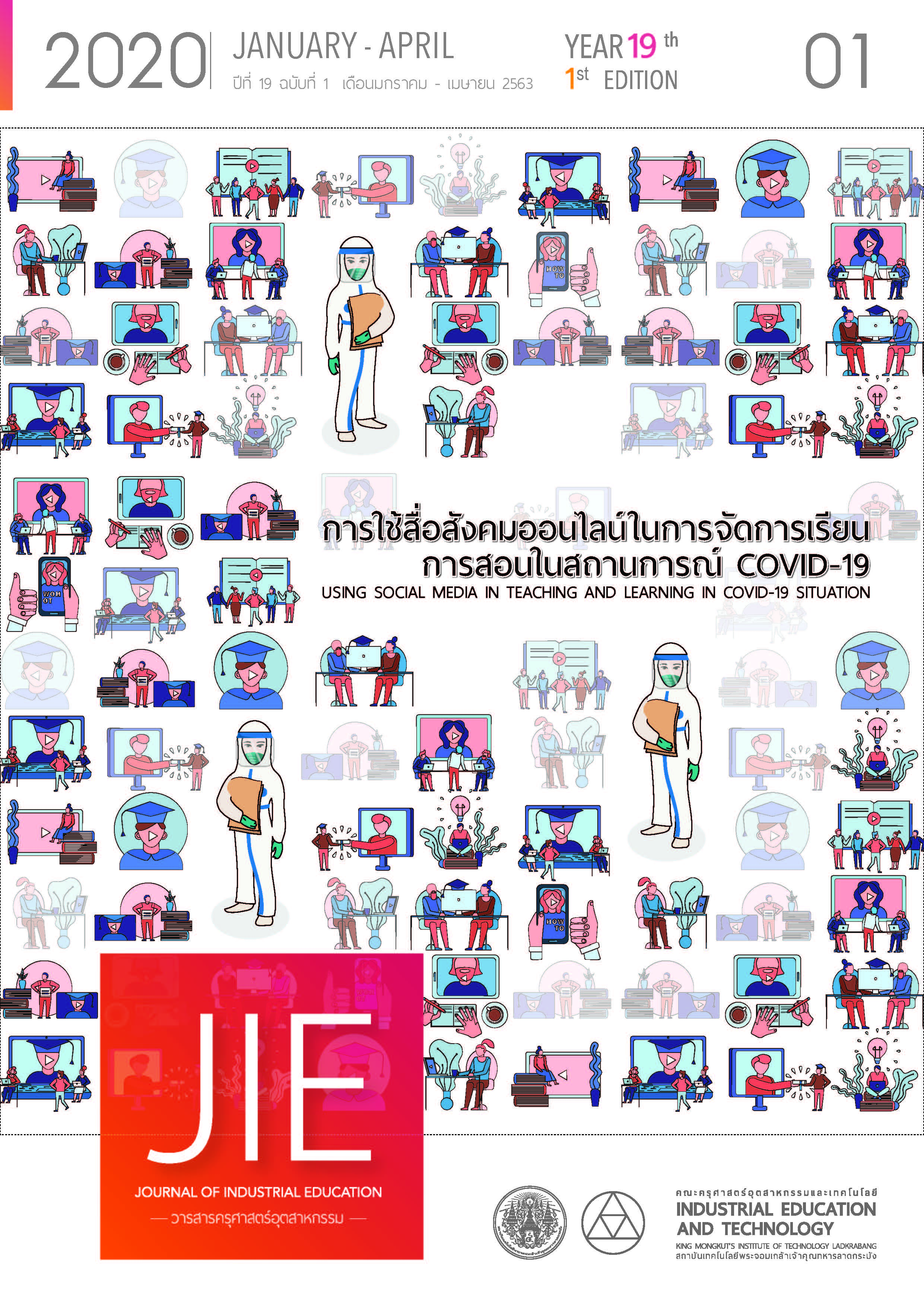การพัฒนากิจกรรมการเรียนรู้เรขาคณิตโดยการบูรณาการแบบเชื่อมโยงเนื้อหากับสถานการณ์ในชีวิตจริง สำหรับนักเรียนชั้นมัธยมศึกษาปีที่ 2
Main Article Content
บทคัดย่อ
ความมุ่งหมายของงานวิจัย เพื่อพัฒนากิจกรรมการเรียนรู้เรขาคณิตโดยการบูรณาการแบบเชื่อมโยงเนื้อหากับสถานการณ์ในชีวิตจริงสำหรับนักเรียนชั้นมัธยมศึกษาปีที่ 2 ให้มีประสิทธิภาพตามเกณฑ์ 60/60 โดยมีกลุ่มเป้าหมายเป็นนักเรียนระดับชั้นมัธยมศึกษาปีที่ 2 ของโรงเรียนปราโมชวิทยารามอินทรา ที่ได้จากการเลือกแบบเจาะจง และมีนักเรียนเป้าหมาย 4 คน เพื่อศึกษาเชิงลึก ผลการวิจัยพบว่า (1) กิจกรรมการเรียนรู้เรขาคณิตโดยการบูรณาการแบบเชื่อมโยงเนื้อหากับสถานการณ์ในชีวิตจริง สำหรับนักเรียนชั้นมัธยมศึกษาปีที่ 2 มีประสิทธิภาพสูงกว่าเกณฑ์ 60/60 โดยมีค่าเฉลี่ย 69.07/69.35 (2) นักเรียนระดับชั้นมัธยมศึกษาปีที่ 2 ที่เรียนด้วยกิจกรรมการเรียนรู้เรขาคณิตโดยการบูรณาการแบบเชื่อมโยงเนื้อหากับสถานการณ์ในชีวิตจริง มีความสามารถในการเชื่อมโยงเนื้อหาเรขาคณิตกับสถานการณ์ในชีวิตจริงสูงกว่าร้อยละ 60 ของคะแนนเต็ม มีจำนวนมากกว่าร้อยละ 60 ของจำนวนนักเรียนทั้งหมด ที่ระดับนัยสำคัญ .05
Article Details
"ข้อคิดเห็น เนื้อหา รวมทั้งการใช้ภาษาในบทความถือเป็นความรับผิดชอบของผู้เขียน"
References
The Institute for the Promotion of Teaching Science and Technology. (2013). Document for remote trainers, teacher training project, elementary level of mathematics learning, teacher training standard course, year 3 (revised version). Bangkok: 3-Q Media.
Sherad III, Wade H. (1981, January). “Why is Geometric a Basic Skill?,” Mathematics Teacher. 74(1) : 19-21.
Suydam, Marilyn. (1985, September). “The Shape of Instruction in Geometry : Some Highlights from Research,” Mathematics Teacher. 78(6) : 481-485
Komol Paisal.(1997). The Development of Individualized Instruction Package in Geometry For Lower Secondary Mathematics Teachers. Dissertation Ed.D. (Mathematics Education). Bangkok: Graduate School Srinakharinwirot University.
Yupin Pipitkul. (1985, January-February). "The concept of teaching high school mathematics," Mathematics. 28 (316-317). 24-48
Kittiphan Tratunsuk (2002-2003, November - December, January). "Does teaching mathematics at the secondary level of Thailand really fail," Mathematics. 46 (530-532). 54-58.
Chanya Phoo-udom. (2002, May - July). "Guidelines for teaching and evaluation and evaluation in accordance with subject 6, mathematical skills / processes," Mathematics. 45 (524-526). 14-37.
Watcharee Kanchanakirati. (2011). Mathematics Learning Management. Phetchaburi: Mathematics and Computer Program Faculty of Science and Technology Phetchaburi Rajabhat University
Ornstein,Allan C;& Hunkins,Fracis P.(1988). Curriculum Foundation, Principle and Issue. New York: Pretice Hall.
National Council of Teacher of Mathematics. (2000). Principles and Standards for School Mathematics. Virginia:The National Council of Teacher of Mathematics.
Amporn Makanong. (2010). Mathematical Skills and Processes: Development for Development. Bangkok: Chulalongkorn University Press.
Bunyisa Saelo. (2005) . The Integration by Connecting of Mathematical Contents on Data Analysis. Data Representation, and Algebra by Using Real-Life Situations for Mathayomsuksa 3 Students . Dissertation Ed.D.(Mathematics Education).Bangkok: Graduate School Srinakharinwirot University.
Supang Chantawanit. (1997). Qualitative research methods. Bangkok: The Publisher of Chulalongkorn.
Krisada Narin. (2012). Results of mathematics learning activities Conic sections with emphasis on connection Mathematics content to real-world situations on academic achievement, problem solving ability and attitude towards mathematics. Dissertation. M.D. (Mathematics): Chon Buri: Graduate School, Burapha University. Photocopy.
Forman, L Susan. (2000). Beyond Eight Grade Functional Mathematics for Life and Work. In Learning Mathematics for a New Century, p. 140. Virginia: National Council of Teacher of Mathematics.

